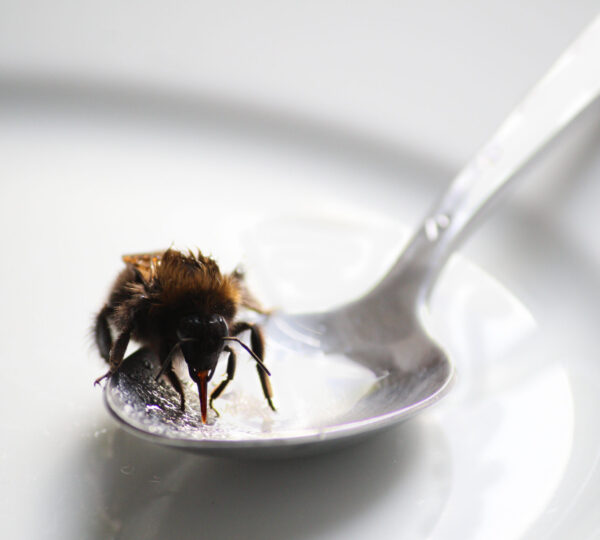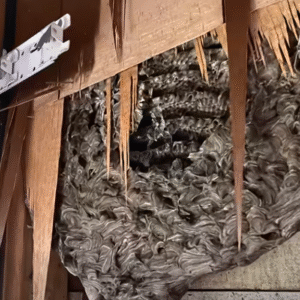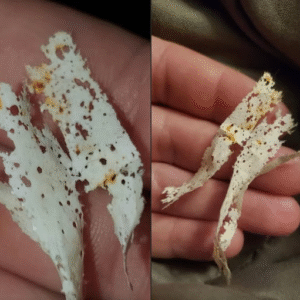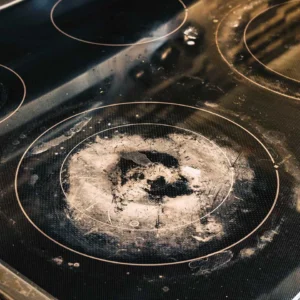There are countless phobias that exist in the world. Some are well-known and widely understood, such as the fear of heights (acrophobia), fear of snakes (ophidiophobia), or fear of spiders (arachnophobia). These are common enough that most people can relate to them, or at the very least understand where the fear might come from. But then there are other phobias — much rarer, sometimes unusual — that tend to confuse those who don’t experience them firsthand.
In my case, my deepest fear revolves around bees. To be specific, I’m afraid of anything that buzzes and has the potential to sting — wasps, hornets, you name it. But bees, for some reason, are the ones that trigger the most intense reaction in me. Why? I honestly wish I knew. Maybe then I could work through it or find a way to overcome what I admit is, at times, a completely irrational fear.
Childhood Terror
When I was a child, this fear was even more extreme. I’m almost embarrassed to admit it now, but back then, if someone had handed me the power to magically erase bees from the face of the Earth with a simple snap of my fingers, I wouldn’t have hesitated. I genuinely saw them as terrifying little creatures whose only goal was to sting me.
But, of course, with time comes maturity — and with maturity comes knowledge. As I grew older and began to learn more about the natural world, I came to a critical realization: eliminating bees would have been a catastrophic mistake. In fact, had my childhood fantasy come true, it would likely have spelled doom not just for bees, but for the human race as well.

Bees: Tiny Creatures, Huge Impact
Bees play a crucial and irreplaceable role in the global ecosystem. Their work as pollinators is what allows many of the plants and crops we rely on for food to grow and reproduce. According to the United Nations Environment Programme, out of the 100 crop species that provide about 90% of the world’s food supply, 71 are pollinated by bees. That’s a staggering figure — and one that puts into perspective just how dependent we are on these little insects for our survival.
With this knowledge in hand, and with a growing appreciation for the interconnectedness of life on Earth, I began to see bees in a new light. No, I haven’t completely gotten over my fear. If a bee lands on me during a summer picnic, chances are I’ll still jump up and run in the opposite direction, flailing my arms like a cartoon character. But now, at least, I understand that bees aren’t the enemy. Quite the opposite — they’re essential allies in the fight to sustain life on this planet.
The Threat Bees Are Facing
Unfortunately, despite their importance, bees are currently facing serious threats around the world. According to the Center for Biological Diversity, nearly 40% of bee species are now at risk of extinction. That’s not just sad — it’s terrifying. Factors contributing to this crisis include habitat loss, pesticide use, climate change, disease, and a decline in the availability of flowers and wild plants.
This decline in bee populations poses a major risk to global food security, biodiversity, and the health of natural ecosystems. Without pollinators like bees, many plants would fail to reproduce, leading to a domino effect that would affect countless other species — including us.
Simple Ways You Can Help Bees
With this in mind, it’s more important than ever for each of us to do our part in supporting bee populations — especially those of us living in urban or suburban areas where bees may already struggle to find the resources they need.
One surprisingly simple thing you can do to help a struggling bee is offer it a spoonful of sugary water. This tip comes from none other than world-renowned naturalist and conservationist Sir David Attenborough. According to him, if you ever find a bee lying on the ground, appearing weak or unable to fly, it may just be exhausted and in need of energy. By mixing two tablespoons of white granulated sugar with one tablespoon of water, and placing the solution on a spoon in your garden or backyard, you can give that bee a second chance at life.
This small act of kindness could provide the burst of energy a tired bee needs to make it back to its hive, where it can continue pollinating and supporting its colony.
Creating a Bee-Friendly Environment
But sugary water is just one way to help. If you want to make an even greater impact, consider transforming a part of your outdoor space into a bee-friendly haven. You don’t need a large garden to make a difference — even a few flowerpots on a balcony can help.
Try planting native wildflowers, herbs, or flowering plants that bloom throughout different seasons. These plants provide essential nectar and pollen sources that bees need to thrive. Avoid using pesticides or herbicides, especially during the blooming period, as these chemicals can be incredibly harmful to bees. Leaving a small area of your yard to grow wild, or creating a “bee hotel” with hollow stems or drilled wood, can also provide shelter and nesting sites for solitary bees, which are also important pollinators.
Changing My Perspective — And Maybe Yours, Too
So yes, I still have a phobia of bees. I still feel my heart rate spike when one gets too close. But now I also feel something else: respect. I no longer see bees as pests to be avoided at all costs, but as essential players in a delicate and complex web of life — one that I’m a part of, too. Their survival is our survival. And if something as simple as putting out a spoonful of sugar or planting a few flowers can help protect these amazing creatures, then it’s something we all should be doing.
So, the next time you see your child, your partner, or your neighbor carefully setting out a spoonful of sugary water in the yard, don’t be puzzled — join them. Better yet, make it a regular habit. It’s a small action, but when enough people care, small actions can lead to big changes.
There are countless phobias that exist in the world. Some are well-known and widely understood, such as the fear of heights (acrophobia), fear of snakes (ophidiophobia), or fear of spiders (arachnophobia). These are common enough that most people can relate to them, or at the very least understand where the fear might come from. But then there are other phobias — much rarer, sometimes unusual — that tend to confuse those who don’t experience them firsthand.
In my case, my deepest fear revolves around bees. To be specific, I’m afraid of anything that buzzes and has the potential to sting — wasps, hornets, you name it. But bees, for some reason, are the ones that trigger the most intense reaction in me. Why? I honestly wish I knew. Maybe then I could work through it or find a way to overcome what I admit is, at times, a completely irrational fear.
Childhood Terror
When I was a child, this fear was even more extreme. I’m almost embarrassed to admit it now, but back then, if someone had handed me the power to magically erase bees from the face of the Earth with a simple snap of my fingers, I wouldn’t have hesitated. I genuinely saw them as terrifying little creatures whose only goal was to sting me.
But, of course, with time comes maturity — and with maturity comes knowledge. As I grew older and began to learn more about the natural world, I came to a critical realization: eliminating bees would have been a catastrophic mistake. In fact, had my childhood fantasy come true, it would likely have spelled doom not just for bees, but for the human race as well.

Bees: Tiny Creatures, Huge Impact
Bees play a crucial and irreplaceable role in the global ecosystem. Their work as pollinators is what allows many of the plants and crops we rely on for food to grow and reproduce. According to the United Nations Environment Programme, out of the 100 crop species that provide about 90% of the world’s food supply, 71 are pollinated by bees. That’s a staggering figure — and one that puts into perspective just how dependent we are on these little insects for our survival.
With this knowledge in hand, and with a growing appreciation for the interconnectedness of life on Earth, I began to see bees in a new light. No, I haven’t completely gotten over my fear. If a bee lands on me during a summer picnic, chances are I’ll still jump up and run in the opposite direction, flailing my arms like a cartoon character. But now, at least, I understand that bees aren’t the enemy. Quite the opposite — they’re essential allies in the fight to sustain life on this planet.
The Threat Bees Are Facing
Unfortunately, despite their importance, bees are currently facing serious threats around the world. According to the Center for Biological Diversity, nearly 40% of bee species are now at risk of extinction. That’s not just sad — it’s terrifying. Factors contributing to this crisis include habitat loss, pesticide use, climate change, disease, and a decline in the availability of flowers and wild plants.
This decline in bee populations poses a major risk to global food security, biodiversity, and the health of natural ecosystems. Without pollinators like bees, many plants would fail to reproduce, leading to a domino effect that would affect countless other species — including us.
Simple Ways You Can Help Bees
With this in mind, it’s more important than ever for each of us to do our part in supporting bee populations — especially those of us living in urban or suburban areas where bees may already struggle to find the resources they need.
One surprisingly simple thing you can do to help a struggling bee is offer it a spoonful of sugary water. This tip comes from none other than world-renowned naturalist and conservationist Sir David Attenborough. According to him, if you ever find a bee lying on the ground, appearing weak or unable to fly, it may just be exhausted and in need of energy. By mixing two tablespoons of white granulated sugar with one tablespoon of water, and placing the solution on a spoon in your garden or backyard, you can give that bee a second chance at life.
This small act of kindness could provide the burst of energy a tired bee needs to make it back to its hive, where it can continue pollinating and supporting its colony.
Creating a Bee-Friendly Environment
But sugary water is just one way to help. If you want to make an even greater impact, consider transforming a part of your outdoor space into a bee-friendly haven. You don’t need a large garden to make a difference — even a few flowerpots on a balcony can help.
Try planting native wildflowers, herbs, or flowering plants that bloom throughout different seasons. These plants provide essential nectar and pollen sources that bees need to thrive. Avoid using pesticides or herbicides, especially during the blooming period, as these chemicals can be incredibly harmful to bees. Leaving a small area of your yard to grow wild, or creating a “bee hotel” with hollow stems or drilled wood, can also provide shelter and nesting sites for solitary bees, which are also important pollinators.
Changing My Perspective — And Maybe Yours, Too
So yes, I still have a phobia of bees. I still feel my heart rate spike when one gets too close. But now I also feel something else: respect. I no longer see bees as pests to be avoided at all costs, but as essential players in a delicate and complex web of life — one that I’m a part of, too. Their survival is our survival. And if something as simple as putting out a spoonful of sugar or planting a few flowers can help protect these amazing creatures, then it’s something we all should be doing.
So, the next time you see your child, your partner, or your neighbor carefully setting out a spoonful of sugary water in the yard, don’t be puzzled — join them. Better yet, make it a regular habit. It’s a small action, but when enough people care, small actions can lead to big changes.





